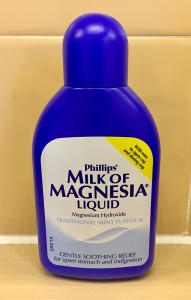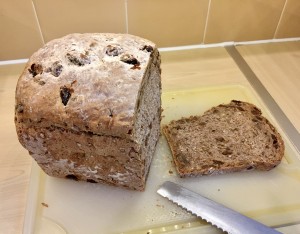I was deleting emails the other day when I spotted a health shop advert. “Time to tackle tiredness. Try our fatigue reducing Magnesium.”
I immediately thought of the Milk of Magnesia and Epsom Salts in Grandma’s all-curing medicine cabinet. The time-honoured compounds used as laxatives and antacids, and in warm baths to calm nerves, ease aches and pains, and heal wounds. And again it seems modern thinking is repackaging old wisdom.
Magnesium does indeed play a critical role in the production of energy in our cells, helping us to feel invigorated without being restless or anxious. But that’s the tip of this mighty mineral’s talents.
It’s also essential for the proper functioning of the heart, arteries, muscles and kidneys, and helping build teeth and bones. It also regulates thyroid, blood sugar and other mineral levels, and is needed by 300 enzymes amid countless chemical reactions. There are around 24 grammes of the metal within the average adult.
The net effects are a regular heartbeat, less stress and lower blood pressure, a calm nervous system, strong digestion, reduced inflammation, fewer kidney stones, a healthy prostate, better urine retention and a lower risk of diabetes.
Fabulous! Where can I get it? You can eat it. Magnesium is found naturally in many different foods: whole wheat; leafy vegetables particularly spinach; quinoa; almonds, cashews and peanuts; black beans, soya beans and tofu; sesame and pumpkin seeds; and there’s also some in figs, lemons and apples. It’s the fourth most common element in the Earth.
Yet many of us are lacking in magnesium as levels have been decreasing globally for the past forty years. This is due to issues such as overdeveloping agricultural land, overusing prescription drugs, and consuming processed and fast foods. Tofu burger anyone?
Some health conditions also lead to deficiencies, such as digestion and kidney problems and diabetes. But especially beware those old culprits of regularly drinking too much booze or caffeine, and eating sweet foods, as they can also affect magnesium levels.
Deficiency symptoms are serious: irregular heartbeat and heart attacks, jumpy nerves and weak muscles, convulsions and seizures, prostate enlargement, bed-wetting and kidney stones – and the 21st century pandemic of fatigue, hence the advertisement for tiredness-tackling magnesium that prompted this article.
So how much should you have? The normal adult daily requirement is 350mg, which – to give you a hypothetical guide – could be achieved by eating 133 grammes of almonds. However, a range of foods is of course always better in terms of digestion, variety and overall nutrition. And preventing wind.
Children need 250mg daily, while pregnant and breastfeeding women require 450mg of the mineral. Handily, excess magnesium is usually passed out of the body so overdosing on it is rare.
And all this knowledge started with a stroppy cow. In 1618, cowherd Henry Wicker walked across Epsom Common (in the English county of Surrey) and came across a pool of water from which his thirsty cattle refused to drink. The water tasted bitter and on evaporation yielded a salt, which had a remarkable effect: it was a laxative. This became the famous Epsom’s salts (magnesium sulphate) and a treatment for constipation for the next 400 years.
Well done Henry and his herd! Magnesium: vital for energy, vital for life.



Comments are closed.